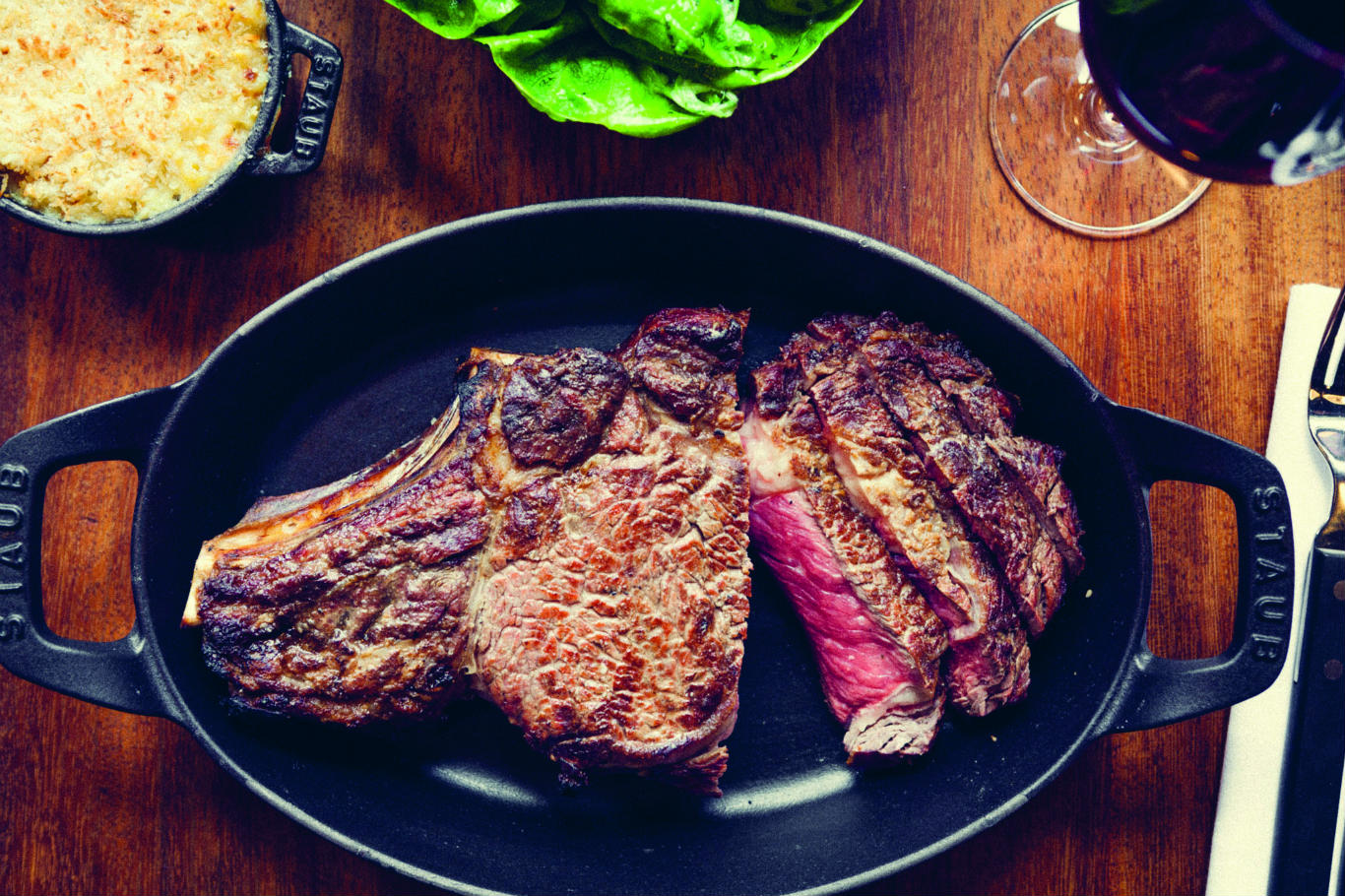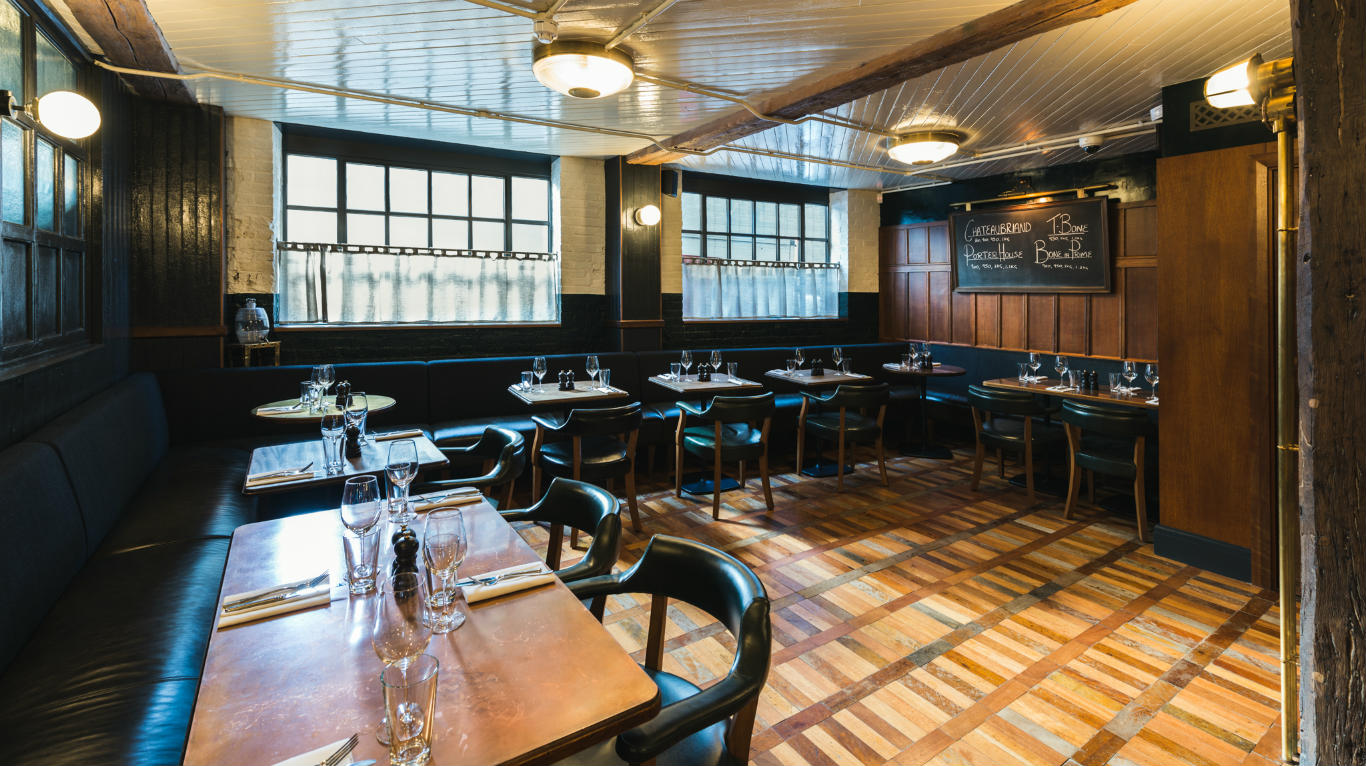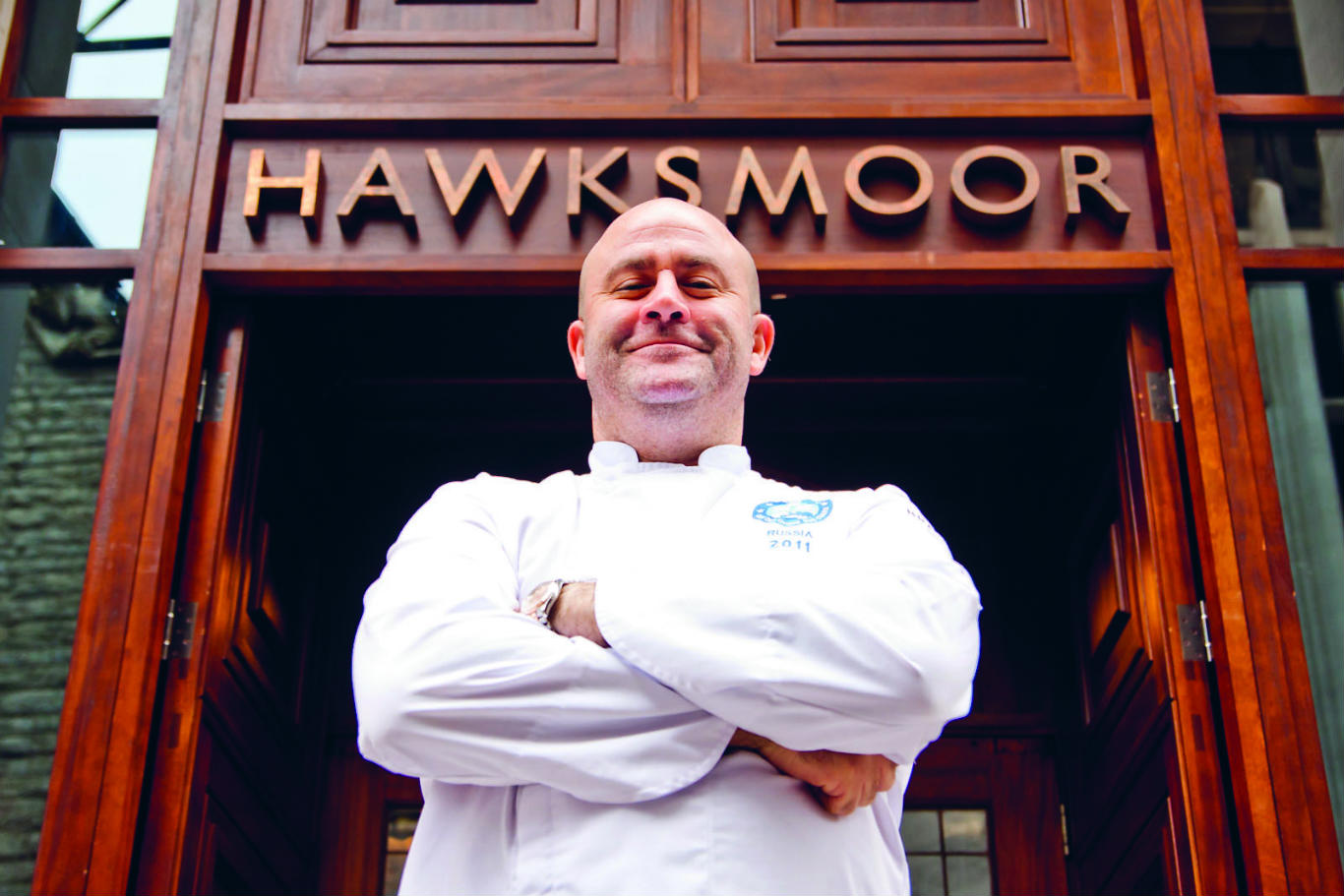
I think it’s fair to say I only learnt how to cook steak properly with the Hawksmoor cookbook lying flat on the kitchen counter, smeared and stained with the fat of a dozen attempts.
If you’re unfamiliar with the hardback tome, published a few years ago, it’s a real masterclass in grilling meat. Its twelve point-guide to the perfect steak is crystal clear in its simplicity: spelt out in an array of stylish fonts, the reader is advised to heat the pan up really hot “for at least 5 minutes”, open the window as “there will be lots of SMOKE”; and all-importantly, “let it rest”.
Somehow, this advice made me want to get it right in a way that I haven’t felt with some other recipe books. I mean, I’ll happily sit and soak up an Ottolenghi or three, or my current favourite, vegetarian cookery writer Anna Jones, but attractive prose or pictures don’t always necessarily influence daily kitchen routines.
In short, the upshot of my time studying how Hawksmoor do it is a confidence in cooking even the cheapest cuts of beef. At our local butcher I can pick up enough bavette or onglet for two for under a tenner. And cook it correctly. Win-win.
LOCAL ADVERTISING
Who was Hawksmoor?

The restaurants are named after Nicholas Hawksmoor (1661–1736), an English architect who contributed to the design of notable buildings including St Paul’s Cathedral. But it’s the Gothic Christ Church Spitalfields – a stone’s throw from the first restaurant – that lent the steakhouse its name. He also designed five others in Greenwich, Bloomsbury, Wapping and Limehouse.
Anyway, having written about food for aeons, I’ve inadvertently followed the trajectory of the Hawksmoor restaurants themselves, from the launch of the original Shoreditch dining room back in 2006 through to the opening of Air Street in Picadilly half a decade later.
Most recently, my partner and I checked out the team’s takeover of a Victorian building on the edge of Borough Market. Dating back to the mid-19th century, it stands on the grounds of the 12th century Winchester Palace. A hop warehouse by the 1930s, it later became an auction hall for a ‘colonial and foreign fruit’ specialists.
As fans, we were hardly expecting a Damascene conversion, but after our visit we concluded there’s something extra special about this restaurant; it might just have something to do with its location.
Inside it’s lighter than many other Hawksmoors, making it feel more laidback – and yet somehow like it’s been open for centuries. Clandestine couples, the odd stray tourist and rumbustious groups of suits alike are absorbed into its weathered timber beams and columns, salvaged from ships broken up on nearby docks. A sense of antiquity is heightened by lots of reclaimed stuff, too: parquet flooring from a library in the Midlands, large holophane lights from a masonic lodge and table tops made from old school chemistry lab tops.
And did I mention that, on our visit, the cooking was spectacular? You can read the full review on our south London sister site Below The River.

But it was more than time that we caught up with co-founder Will Beckett to find out how they did it. The son of food writer and critic Fiona Beckett, Will admits that “while other kids were out stealing hubcaps or honing their skills in pool halls, I accompanied my mother to Michelin-starred restaurants”. His pal and business partner Huw Gott is from a similarly foodie background, the son of award-winning café owners. The pair met at school at the age of 11 and went into business together in 2003.
Can you remember life pre-Hawksmoor?
Just! Huw and I grew up two streets apart in St Albans. We’ve been best mates since we were eleven and in fact now live two streets apart down in Forest Hill/Peckham. We grew up in food and drink families, but were convinced against our instinct by wiser family members to “get real jobs”. Neither enjoying them nor being any good at them, at 26 we opened our first Shoreditch bar together. I’d love to be able to tell you that Hawksmoor was the result of a visionary understanding of the restaurant market or a grand plan, but it wasn’t. It was just two friends who loved what we did, with a sense that we could do a cool steak restaurant, having visited many over the years while lamenting the lack of the great British meat of our childhood.
What do you do differently?
It seems hard to fathom now, but in 2006 there really wasn’t a huge amount of competition for “best steak restaurant in London”. There weren’t many places you could go where you could have a really great meal in a relaxed casual setting; neither was there a huge amount of interest in British meat. We hit on something more by luck than judgement. All our beef comes from cattle who are fed on a natural diet of grass and hay. They’re grown slowly in order to reach maturity and the best meat is selected, butchered by hand and dry-aged for 35 days.

Is consistency a challenge?
Nowadays I think we still connect for two reasons above all: we’re obsessive about quality and consistency – not going down that well-trodden path of getting worse as you get bigger – and we try incredibly hard to be a great employer. If you succeed in that then you can hire people who are significantly more talented than you, who stay around for a long time and you can learn and grow together. Those are probably the two biggest secrets of our success.
It must be working as you have 11 restaurants now.
Yes, although we like to have a simple idea and then relate decisions back to it rather than have some grand scheme. With Hawksmoor we’ve talked a lot about creating something that stands the test of time; and with our other one, Foxlow, we talk about ‘great neighbourhood restaurants’.
Borough was my favourite Hawksmoor experience yet. Are you doing anything differently there?
In a way no, because we always focus on trying to do something that feels just right for the area and which doesn’t feel “of a moment”. I suppose that also means that it is different from the others: it’s the only one in Borough so it hopefully has an interior that fits with the old warehouse that we’re in and also a menu that fits with Borough market. We’ve got lots of suppliers past and present who are there, and a Cooks’ Room downstairs that’s both private dining room and experimental space for chefs – who regularly pop to the market to get stuff for their latest idea.
Richard Turner’s top 5 tips

1. Buy the best steak you can afford from a knowledgeable source. Ask questions about the animal: if they can’t answer your questions, shop elsewhere.
2. Remove your steak from the fridge at least half an hour before cooking. This is called ‘tempering’.
3. Cut your steak thick: thin steaks require excessive heat to achieve Maillard (the chemical reaction that gives browned/seared food its flavour); thicker steaks cook slower, a good thing.
4. Season aggressively with clean sea salt, Maldon preferably.
5. Once cooked, allow your steak to sit for up to half an hour in a warm place, this is called ‘resting’.
Would you open up in King’s Cross?
Absolutely, in fact we’ve tried and failed to get a restaurant in the area. I love what’s happening and I hope that others will be pushing the foodie angle even further. There’s a real opportunity to make it an incredible destination.
Finally, what’s next for Hawksmoor?
New York. We’re opening the flagship space in the new World Trade Center (14,000 sq ft) next year, which is incredibly exciting and unbearably daunting at the same time.


